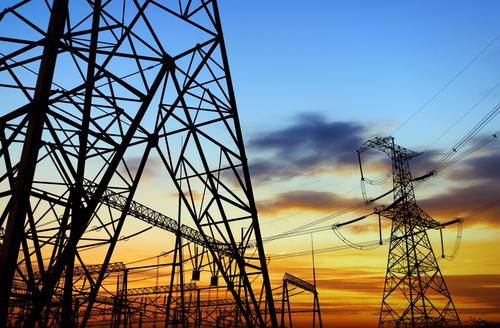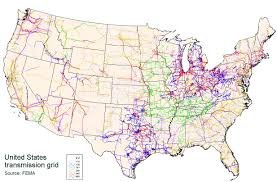
I’m not normally interested in doomsday scenarios. The idea that Fukushima is some sort of “extinction-level” event (whatever that means) or is ending life in the Pacific Ocean, as I’ve seen people say on social media, is simply contradicted by the facts and the reality that the Pacific Ocean is a really big place. Dilution is never a solution for pollution–it doesn’t get rid of toxins like Cesium-137–but it does spread them out a lot.
Fukushima was an absolute disaster for Japan, and could have been a lot worse if the wind had been blowing inland instead of out to sea during the times of the heaviest radiation releases. But it’s not going to end the world. And neither is any other nuclear reactor accident confined to a single site.
But there is one doomsday scenario that is frighteningly based in actual possibility and for which the U.S. is remarkably and negligently unprotected: the loss of the electric grid.
Here’s how an energy consultant named Chip Register describes a recent conversation he had with former CIA Director James Woolsey:
In a previous article, I had a conversation with former-CIA chief Jim Woolsey to discuss one of America’s greatest national security vulnerabilities, its power grid. The issues that Woolsey has been concerned with for over a decade has been the ease in which a terrorist group or other actor (think North Korea for example) could attack the grid and plunge the country into darkness for months, if not years. And if that seems far-fetched, just recall how a tree limb fell in Ohio in 2003 and blacked out the entire Northeast and part of Canada for several days.
Woolsey describes several scenarios of how the grid could be taken down for an extended period of time by anyone with the means and the will to do the nation, and the world, great harm. His focus was on EMP, or electromagnetic pulse. That’s part of the radiation blast emitting from a nuclear detonation, and it has the effect of rendering all forms of electrical devices useless. Radio, televisions, telephones, and, yes, power stations would all essentially fry from the inside out if exposed to such an event. Permanently.
Still seemed far-fetched? It really isn’t. A very small and unsophisticated nuclear device (which is or could be in the possession of many American foes) could be attached to a weather balloon launched from a boat in the Gulf of Mexico or off of California and floated to the county’s mid-continent where its detonation would have the greatest effect. America would literally go dark. No phones. No money. No heat. No running water. No medicine. No police. Just darkness.
Congressional studies quoted by Woolsey estimate that two-thirds of the population would die of starvation, disease, exposure or violence related to social breakdown in the first twelve months alone.
And to make matters worse, we would never even know what hit us, because we would have no means to investigate, to say nothing of respond. Just darkness.
The idea of an EMP destroying the electric grid isn’t new–the possibility has been known for decades. A well-designed cyber attack could result in the same scenario. But Woolsey, and most people who have tried to raise awareness of the issue, tend to leave out of their descriptions the most important and devastating consequence of grid destruction: the undeniable reality that every nuclear reactor hooked up to the grid would melt down. And the meltdowns of nearly 100 nuclear reactors–and a few fuel pools still at closed reactors–would release enough radiation to make just about the entire nation permanently uninhabitable.
Fukushima, after all, was caused by a loss of offsite power. While reactors have emergency diesel generators to address this problem, under a scenario of complete lack of power, those generators would run out of fuel. Replenishment would become difficult at first and impossible in the longer run. Eventually, in a matter of days, weeks, perhaps a couple months at best, every reactor would melt and every fuel pool would run dry. All of them.
Sounds pretty apocalyptic because it is.
Thus, when a few years ago a New Hampshire man came to me wanting my comments, and NIRS’ support, for a Petition for Rulemaking he was putting together to require some sort of effective backup power for fuel pools at reactors in the event of an EMP, I was willing to help even though I didn’t know the guy or his organization, the Foundation for Resilient Societies. He had been working to convince FERC to take action, but they weren’t paying attention so he thought he’d try the NRC.
I pointed out to him that it was not only the fuel pools, but the reactors themselves that needed better protection and a renewable-powered backup source. He agreed but for his own political reasons wanted to leave it at pools. So I helped how I could, and joined him in a press conference in February 2010 announcing the filing of the petition, which is here.
When Fukushima happened a year later, I thought we looked pretty prescient. What better real-life example could you get of the consequences of a loss of offsite power? The NRC, of course, denied the petition.
The denial of the petition doesn’t change the fact that the threat is real. It’s not inevitable, perhaps it’s not even likely, but it is real. And hardening the grid to protect against it wouldn’t be all that expensive considering the stakes–a few billion dollars.
But, as Chip Register’s article points out, there is an even better approach than hardening the existing grid. That conversation Register had with Woolsey is how Register introduces a new conversation with former Federal Energy Regulatory Commission (FERC) chair Jon Wellinghoff, who has long been a strong supporter of clean energy and distributed generation.

It turns out that the most effective way to protect the grid is also how we get to a clean energy system. The two go hand in hand. As Wellinghoff argues effectively, an electric grid based on distributed generation is an electric grid that is essentially invulnerable to attack, whether through EMP, cyberwar or some other form of assault.
Register’s interview with Wellinghoff gets a little wonky, but is well worth reading and bringing attention to. Who knew that rooftop solar power, for example, is not only good for the environment and the pocketbook, but is essential to protecting national security?
Says Wellinghoff: “If everyone had solar panels on their respective roofs then we could adequately disperse power generation in such a way that it makes nodes [a small number of centralized high voltage substations used in the current grid architecture] practically irrelevant. It is easy to hack into a node and cause it to malfunction but it is basically impossible to hack 10 million solar power systems.”
And Wellinghoff also describes the obstacles to building the distributed grid: it’s politics and the political power of utilities that rely on the 20th century model of baseload generation. They’re threatened by the prospect of both clean energy and a grid they might no longer dominate and control.
The transformation to a 21st century distributed generation grid is nearly inevitable. Whether that transformation occurs in a timely-enough fashion may depend on the political power and actions of those of us who believe in a clean energy system. Having the argument that the new grid is critical for national security on our side could be one of our most powerful weapons.
Michael Mariotte
February 11, 2015
Permalink: https://www.nirs.org/2015/02/11/how-rooftop-solar-can-prevent-the-apocalypse/
Your contributions make publication of GreenWorld possible. If you value GreenWorld, please make a tax-deductible donation here and ensure our continued publication. We gratefully appreciate every donation of any size.
Comments are welcome on all GreenWorld posts! Say your piece. Start a discussion. Don’t be shy; this blog is for you.
If you’d like to receive GreenWorld via e-mail, send your name and e-mail address to nirs@nirs.org and we’ll send you an invitation. Note that the invitation will come from a GreenWorld@wordpress.com address and not a nirs.org address, so watch for it. Or just put your e-mail address into the box in the right-hand column.
If you like GreenWorld, help us reach more people. Just use the icons below to “like” our posts and to share them on the various social networking sites you use. And if you don’t like GreenWorld, please let us know that too. Send an e-mail with your comments/complaints/compliments to nirs@nirs.org. Thank you!
GreenWorld is crossposted on tumblr at https://www.tumblr.com/blog/nirsnet



